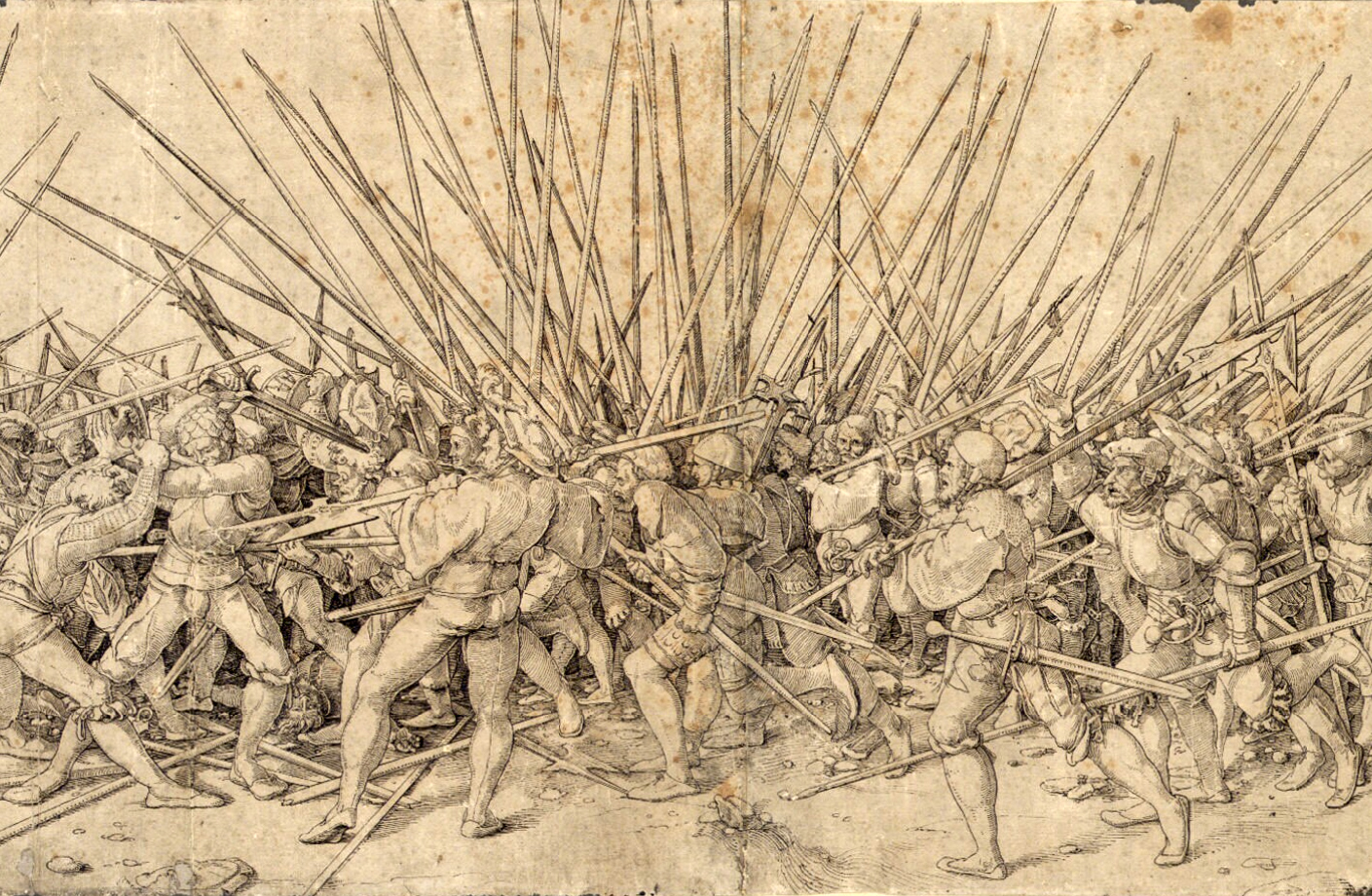To start, I'd like to draw your attention to The Push Of Pike:
Otherwise known as "Bad War." Two relatively evenly matched masses of footsoldiers armed with pikes or polearms, locked in combat until one side or the other is overwhelmed. As soon as I read about this, I instantly thought, "Wow. Tunnels and Trolls combat isn't so unrealistic after all, is it?"
I read further. The push of pike was a big problem on the battlefield, and armies of the day (fifteenth, sixteenth century; right about where my more "modern" peoples in Ardis are situated) were hard pressed to figure out how to undo stalemates like this. German mercenaries, the Landsknechts, employed soldiers armed with two-handed swords to break into the entangled front lines, break the opposition's pikes, and cut down the front line of pikemen (who were ill able to defend themselves against anything in closer quarters.) Spanish armies became well known for employing a combined formation of pike, sword and arquebus to break up opposing pike or halbard-squares.
This is all very easily translated into T&T combat. Suppose we have two bands of warriors, each armed with pikes and comparable armor: their fight can be handled with straight melee, and it's liable to be a long one if they're evenly matched. Even if one band is twice the size of the other, if geographical or dungeon features limit the number that can reach the front of the fight, numerical advantages are neutralized: what we have here is a Push of Pike.
Supposing, then that either or both side has warriors armed with closer-reach weapons - say, a broadsword or a two-hander, or a dwarf with an axe. If those warriors can get inside the effective range of the enemy pikes, they should be able to deliver any hits they can. A suitable save on dexterity should do the trick! If BOTH sides have this idea, depending on the breadth of the line of battle, either both swordsmen should be wreaking havoc on their target pikemen, or they could form a little sub-melee underneath the pikes. As a matter of fact, a pikeman faced with an onrushing warrior with a short sword might be afforded the option of dropping his pike and drawing his own blade to defend himself: perhaps another save on dexterity to pull it off. And not just swords: Look up at the engraving, in the foreground: a fellow's got his poleaxe gripped up high, in order to engage a foe at closer quarters.
As I think of it, the option of trying to get inside an opponent's guard should be available where practicable: A hobbit with a dagger against a giant? Certainly. A man with a short sword facing another with a greatsword? Probably - but a more challenging maneuver, calling for a higher save. Doing this with closely matched weapons - say, rapier versus rapier - would be much riskier. Your warriors are barely holding on in a melee with a passle of orcs - can the fairy zip around back and hamstring one of them with her little hatpin sword? Why not?
Delvers should always try ways to break through the push of pike - especially when they're on the losing end of it!

As I think about it more, basic melee should virtually never go on as long as the samples do in the rules. Once the balance of the fight seems clear, whoever's on the losing end should be trying to get away or should be trying something insane to turn things around; whoever's got the upper hand should be trying to disarm or otherwise subdue the losers.
ReplyDeleteMonsters with MRs, largely being "extras" in the drama, should run as soon as they start to lose unless they're automata or skeletons or giant ants - mindless things fight mindlessly. Monsters with stats, however, should be trying the whole range of tricks that the PCs can be counted on to unleash.